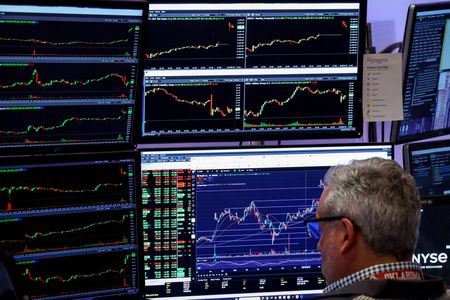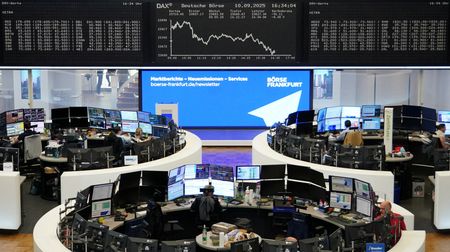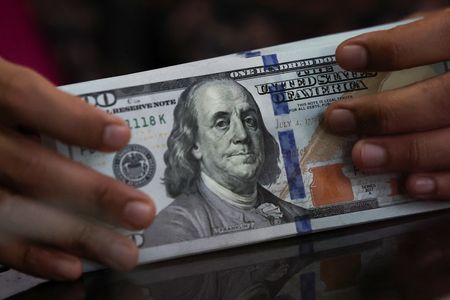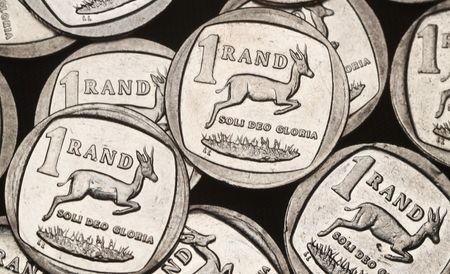By Sinéad Carew and Marc Jones
NEW YORK/LONDON (Reuters) – MSCI’s global equities gauge rose to a fresh record high on Thursday while U.S. Treasury yields fell with the dollar as data pointing to a softer job market eclipsed a higher-than-expected rise in U.S. inflation in investors’ minds.
The Consumer Price Index increased by 0.4% in August, the most in seven months, after a 0.2% rise in July, driven by a 0.4% jump in housing costs and a 0.5% increase in food prices. The cost of food consumed at home jumped 0.6%.
In a separate report, the Labor Department said initial claims for state unemployment benefits jumped 27,000 to a seasonally adjusted 263,000 for the week ended September 6, the highest level since October 2021, whereas economists had on average expected 235,000 claims.
Those numbers solidified expectations that the Federal Reserve would cut U.S. interest rates next Wednesday, and increased bets for more cuts in October and in December.
“The focus shifted away from the CPI print to the jobless claim number. The claims number was a little bit higher than expected, so it is a potential indicator we’re seeing further weakness in the labor market,” said Jack Janasiewicz, lead portfolio strategist at Natixis Investment Managers Solutions.
“What you’re getting is this tug of war between data that’s pointing to slowing in the economy, but at the same time the reaction is to price in additional Fed easing, which is giving support to the market.”
On Wall Street at 11:23 a.m. ET, the Dow Jones Industrial Average was up 558.69 points, or 1.24%, to 46,049.61, the S&P 500 was up 50.65 points, or 0.78%, to 6,582.68 and the Nasdaq Composite was 148.51 points, or 0.68%, higher at 22,033.93.
MSCI’s gauge of stocks across the globe hit a record high for the second day in a row. It was last up 6.39 points, or 0.66%, to 971.19.
The pan-European STOXX 600 index rose 0.5% after the European Central Bank kept its interest rates steady at 2% as widely expected and trimmed its inflation forecasts but offered no clues about its next move, while investors continued to bet more support will be needed. [GVD/EUR]
In U.S. Treasuries, the yield on the benchmark 10-year Treasury note briefly dipped below 4% for the first time since early April after the inflation and jobless claim data.
It was last down 2.1 basis points on the day to 4.011%, while the 30-year bond yield fell 1.6 basis points to 4.6612%.
The 2-year note yield, which typically moves in step with interest rate expectations for the Fed, fell 2.5 basis points to 3.506%.
In currencies, the dollar index, which measures the greenback against a basket of currencies including the yen and the euro, fell 0.29% to 97.50.
The euro was up 0.41% at $1.1741 while against the Japanese yen, the dollar weakened 0.25% to 147.09.
Sterling strengthened 0.33% to $1.3574 while the Mexican peso strengthened 0.37% to 18.52 to the dollar and the Canadian dollar strengthened 0.18% versus the greenback to C$1.38.
In commodity markets, oil prices fell after gaining for three days, pressured by concerns over softening U.S. demand and broad oversupply, which offset threats to output from conflict in the Middle East and the Russian war in Ukraine. On Wednesday, Poland’s downing of suspected Russian drones had triggered fresh talk of sanctions while Israel had attacked Hamas leaders in Qatar the day before. [O/R]
U.S. crude fell 1.65% to $62.62 a barrel and Brent fell to $66.52 per barrel, down 1.44% on the day.
In precious metals, spot gold, which hit record highs earlier this week, fell 0.09% to $3,637.02 an ounce. U.S. gold futures fell 0.31% to $3,632.30 an ounce.
(Reporting by Sinéad Carew, Marc Jones; Editing by Alexandra Hudson and Kevin Liffey)










